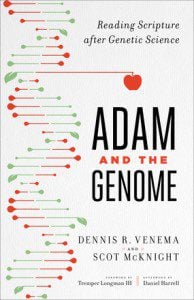Must read of the week about Thabiti Boone. (HT: LNMM) “He went to work for a law firm in Rochester and made enough for a real place, a real bedroom for Kim, a real life. Money kept law school on the back burner, but over the next couple decades, he made a good living, eventually moving back to a middle-class section of Brooklyn, getting Kim into the best schools he could. He never married and never had another child. His story began to leak out, the teen dad and star athlete who gave up everything to be a father first. He began making speeches, working with the New York Knicks and then the NBA. He became active in the community. He realized his story is bigger than what he did for himself and his daughter. It’s about a national crisis of broken homes, particularly in the black community. It’s about support and empowerment and showing young men there is another way. He now works on President Obama’s Fatherhood and Mentoring Initiative. “This has to end,” Boone said. “Fathers have to stand up. Not just in doing big things. That’s the pressure society puts on them. They think they have to be Superman. It can be little things. Take your kid to the park. Cook them breakfast. Just spend time. Be there. “The rewards of being a father will repay you.”
Tim Stafford on the BioLogos event in NYC: “The most sobering moment for attendees of the Biologos “Theology of Celebration” conference in New York City, March 20–22, came when David Kinnaman of Barna Research presented findings on what U.S. Protestant pastors believe about creation. More than half profess a 6-day, 24-hour creation of life. Fewer than one in five, on the other hand, follow Biologos in affirming an evolutionary process as God’s method of creation.”
 Joan Acocella on T.M. Luhrmann’s study of the Vineyard: “It is hard to blame her, though, for these confusions. Much of our culture is based on the teachings of people who had visions: Moses (God gave him the commandments personally), Muhammad (the Archangel Gabriel spoke to him in a cave), St. Francis, Joan of Arc. Whether or not we believe in visions, we often believe in the principles communicated via visions: do not kill, do not steal, love God’s creatures, kick invaders out of your country. Some historians have treated the visionaries as psychotic. That interpretation is less popular today, but, in my experience, the contemporary approach—that contact with the supernatural is merely the sort of thing that happened in the old days—is not very helpful, either. Modern writers also seem not to notice that many of these vatic souls belonged to sects that were far weirder (by our standards) than any modern evangelical congregation. Luhrmann is one of the few lay writers who attempt to account for visions via modern scientific theories. If, in the end, she tries to resolve the question of her attitude toward evangelism by saying that she, too, came to know God, because she began to weep and pray at Vineyard gatherings—an experience that seems to me no different from crying at a sad movie (it wouldn’t butter any parsnips with the Pope or, I would guess, many evangelical pastors)—it is wrong to make trouble over this. She has addressed a subject that most other people would never touch. We should thank her.”
Joan Acocella on T.M. Luhrmann’s study of the Vineyard: “It is hard to blame her, though, for these confusions. Much of our culture is based on the teachings of people who had visions: Moses (God gave him the commandments personally), Muhammad (the Archangel Gabriel spoke to him in a cave), St. Francis, Joan of Arc. Whether or not we believe in visions, we often believe in the principles communicated via visions: do not kill, do not steal, love God’s creatures, kick invaders out of your country. Some historians have treated the visionaries as psychotic. That interpretation is less popular today, but, in my experience, the contemporary approach—that contact with the supernatural is merely the sort of thing that happened in the old days—is not very helpful, either. Modern writers also seem not to notice that many of these vatic souls belonged to sects that were far weirder (by our standards) than any modern evangelical congregation. Luhrmann is one of the few lay writers who attempt to account for visions via modern scientific theories. If, in the end, she tries to resolve the question of her attitude toward evangelism by saying that she, too, came to know God, because she began to weep and pray at Vineyard gatherings—an experience that seems to me no different from crying at a sad movie (it wouldn’t butter any parsnips with the Pope or, I would guess, many evangelical pastors)—it is wrong to make trouble over this. She has addressed a subject that most other people would never touch. We should thank her.”
Amy Julia Becker: “Many Americans, including many Christians, do not consider urban schools like Chimborazo good enough for their children. Despite federal programs such as George Bush’s No Child Left Behind and the Obama administration’s Race to the Top, American students still struggle to achieve basic academic goals. The nonpartisan Broad Foundation for Education reports that 68 percent of American 8th graders can’t read at their grade level, and most will never catch up. Nationally, 70 percent of students graduate from high school, and only 50 percent of African American and Latino students graduate on time. But in recent years, a growing number of Christians across the country have felt called to take up the educational challenge in their own communities. In many of those communities, including Richmond, Virginia, the tide seems to be turning.”
Good study by Martin Cothran of C.S. Lewis’ storied-conversion.
Meanderings in the News
Unfortunately, Jordan Weissmann seems to think the system is the problem on this one, compares our system to Europe’s and then suggests Europe’s is better: “The phrase “dropout factory” is ordinarily applied to America’s failing high schools — the ones where students are expected to fall through the cracks, where those who make it past graduation and on to college are considered the exceptions, the lucky survivors. But by that definition, another level of U.S. education counts as a “dropout factory”: our entire higher education system.”
Exurbs issue: “WASHINGTON (AP) – Living in an outlying Chicago suburb, Jeff Wehrli recalls a heady time not too long ago when city dwellers poured in and developers couldn’t build McMansions fast enough. Now boom has turned to bust, as in many of the nation’s “exurbs,” and Wehrli can’t help but wonder when, or if, things will turn around. All across the U.S., residential exurbs that sprouted on the edge of metropolitan areas are seeing their growth fizzle, according to new 2011 census estimates released Thursday. Gas prices are discouraging long commutes. Young singles prefer city apartments. Two years after the recession technically ended, and despite some signs of economic recovery, there’s a reversal of urbanites’ decades-long exodus to roomy homes in distant towns. Indeed, Americans are shunning any moves at all – the lowest rate in records going back to the 1940s. The annual rate of growth in American cities and surrounding urban areas has now surpassed that of exurbs for the first time in at least 20 years, spanning the most recent era of sprawling suburban development.”
SCOTUS, the health care debate, and evangelicals: “The U.S. Supreme Court listened to an unprecedented three days of oral arguments on the constitutionality of the Patient Protection and Affordable Care Act (ACA) after receiving scores of amicus curiae or “friend of the court” briefs from outside groups. While most religious organizations and churches sat this case out, faith-based conservative political groups weighed in with arguments ranging from religious liberty to the legal definition of a “tax.” [Including…]”Alliance Defense Fund (ADF) teamed up with pro-life groups such as Americans United for Life to argue that the act violates the Free Exercise clause of the First Amendment. The ADF coalition argued that the individual mandate would inhibit religious freedom by “effectively forcing” individuals to pay for an abortion premium because they may be enrolled by their employers in plans that cover abortion. The ADF argued that others may be “forced to choose between insufficient plans that respect their conscience versus other plans that happen to require an abortion premium, but that may otherwise better meet their health needs or their choice of doctor network.” Liberty Counsel, which represented Liberty University in one of the early lawsuits against the act, also argued that the act violates religious freedom, taking aim at the definition of “minimum coverage.” The law outlines a set of essential services that health care plans must include, and the details of these services are determined by the Secretary of Health and Human Services. Liberty said that faith-based groups may be forced to choose between their religious beliefs and complying with the law, which may include the requirement to cover services like contraception that blocks uterine implantation or other services that violate the employer’s faith.”
Matthew O’Brien, Wedding rings and their origins in the Breach of Promise to Marry: ” Once upon a time, diamond rings weren’t just gifts. They were, frankly, virginity insurance. A now-obsolete law called the “Breach of Promise to Marry” once allowed women to sue men for breaking off an engagement. Back then, there was a high premium on women being virgins when they married — or at least when they got engaged. Surveys from the 1940s show that roughly half of engaged couples reported being intimate before the big day. If the groom-to-be walked out after he and the bride-to-be had sex, that left her in a precarious position. From a social angle, she had been permanently “damaged.” From an economic angle, she had lost her market value. So Breach of Promise to Marry was born. But in the 1930s, states began striking down the “Breach of Promise to Marry” law. By 1945, 16 states representing nearly half of the nation’s population had made Breach of Promise a historical relic. At the same time, the diamond engagement ring began its transformation from decorative to de rigueur. Legal scholar Margaret Brinig doesn’t think that’s a coincidence, and she has the math to prove it. Regressing the percent of people living in states without Breach of Promise against a handful of other variables — including advertising, per capita income and the price of diamonds — Brinig found that this legal change was actually the most significant factor in the rise of the diamond engagement ring. It’s historically plausible. The initial mini-surge in diamond imports came in 1935, four years before DeBeers launched its celebrated advertising campaign. What’s going on here?” Yep this is where it goes next:
“Let’s think like an economist. An engaged couple aren’t all that different from a borrower and a lender. The woman is lending her hand in marriage to the man, who promises to tie the knot at a later date. In the days of Breach of Promise, the woman would do this on an unsecured basis — that is, the man didn’t have to pledge any collateral — because the law provided her something akin to bankruptcy protection. Put simply, if the man didn’t fulfill his obligation to marry, the woman had legal recourse. This calculus changed once the law changed. Suddenly, women wanted an upfront financial assurance from their men. Basically, collateral. That way, if the couple never made it down the aisle, she’d at least be left with something. And that something was almost always small and shiny. The diamond ring was insurance.”
The Blaze got this one wrong: Russ Moore was there.
Gloria Borger: “This Supreme Court case is the Waterloo for political polarization, because it underscores something we should have known all along: Great changes in national public policy should never be erected on slender partisan majorities….That kind of work is not something we see a lot of these days: health care reform, arguably the most far-reaching social legislation since Medicare, was passed strictly along party lines. Sure, the White House says — with some justification — that Republicans weren’t interested in their plan. But would the GOP have bitten on a more scaled-back version? Would some in the GOP have broken ranks over, say, requiring insurance companies to cover pre-existing conditions so long as it wouldn’t bankrupt them? Sure. But that wasn’t to be. The Democrats had a two-house majority, so the stars were aligned. And with recalcitrant Republicans vocal in their opposition, the Democrats, too, became more strident.”
Hiring on college campuses: “Hiring is back in a big way on many college campuses, one of several signs a recovery in the U.S. jobs market is gaining traction. After four years during which many students graduated to find no job and had only their loans to show for their studies, most college campuses are teeming with companies eager to hire. A survey by the National Association of Colleges and Employers (NACE) found 2012 hiring is expected to climb 10.2 percent, above a previous estimate of 9.5 percent.”
Frank Pavone on Catholic and Politics: “But the fact is that the platform of the church’s teaching and mission cannot be and must not be that of any political party. It is, rather, the Gospel of Jesus Christ. It is not a matter of whether the church endorses a political party or movement. It is, rather, whether the party or movement endorses the church’s message and mission. A candidate or party that embraces some aspect of the church’s message or mission will benefit – at least in the eyes of Catholics who are committed to their faith – when the church, as she must, advances that aspect of her message or mission. The way to evaluate whether, for her part, the church is being faithful to the balance and independence she is called to have, is rather simple, and it’s a litmus test I use as I preach the anti-abortion message and help other priests do the same, including during election years. I ask this simple question: If today, opposing candidates or parties swapped their positions on abortion, would any aspect of our message change? Indeed, our message will not change if it is rooted in fidelity to the Gospel. Whether that message helps or hurts a candidate, party, or political movement won’t be the church’s fault; it will be theirs.”
Virtual biographers: “WASHINGTON — Law enforcement tracking of cellphones, once the province mainly of federal agents, has become a powerful and widely used surveillance tool for local police officials, with hundreds of departments, large and small, often using it aggressively with little or no court oversight, documents show. The practice has become big business for cellphone companies, too, with a handful of carriers marketing a catalog of “surveillance fees” to police departments to determine a suspect’s location, trace phone calls and texts or provide other services. Some departments log dozens of traces a month for both emergencies and routine investigations. With cellphones ubiquitous, the police call phone tracing a valuable weapon in emergencies like child abductions and suicide calls and investigations in drug cases and murders. One police training manual describes cellphones as “the virtual biographer of our daily activities,” providing a hunting ground for learning contacts and travels.”
Razib Khan on Jonathan Haidt: “One prediction here is that in your personal life you might observe that while liberals mischaracterize conservatives, conservatives caricature liberals. Caricatures might be misleading, but they consist more of exaggerating salient tendencies beyond normality, rather than constructing new features. Another aspect of this result which bears rumination is that liberals in particular are ill-served by living in a cultural “bubble,” because they lack an intuitive grasp on the moral cognition of non-liberals. This might explain the constant liberal gripe that people “vote against their interests,” as liberals define “interests” in a manner which does not conform to the full range of values which other groups hold (or, liberals view those values as fundamentally irrelevant or illegitimate).”
Meanderings in Sports
Go North Park! “The North Park baseball team has reached a No. 20 national ranking in the latest D3Baseball.com Top 25 national poll released Monday afternoon.”












